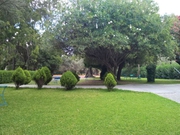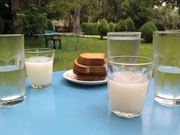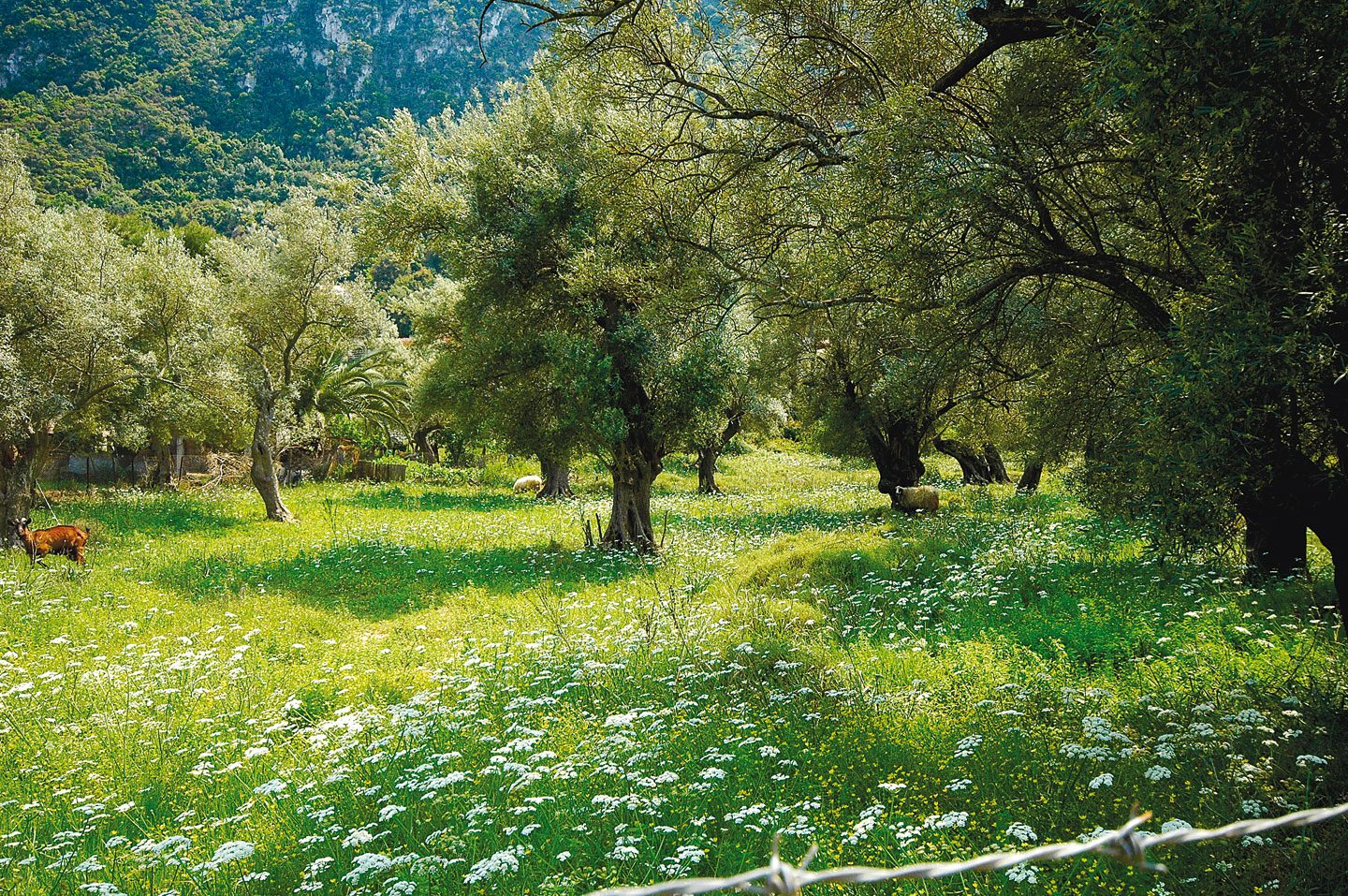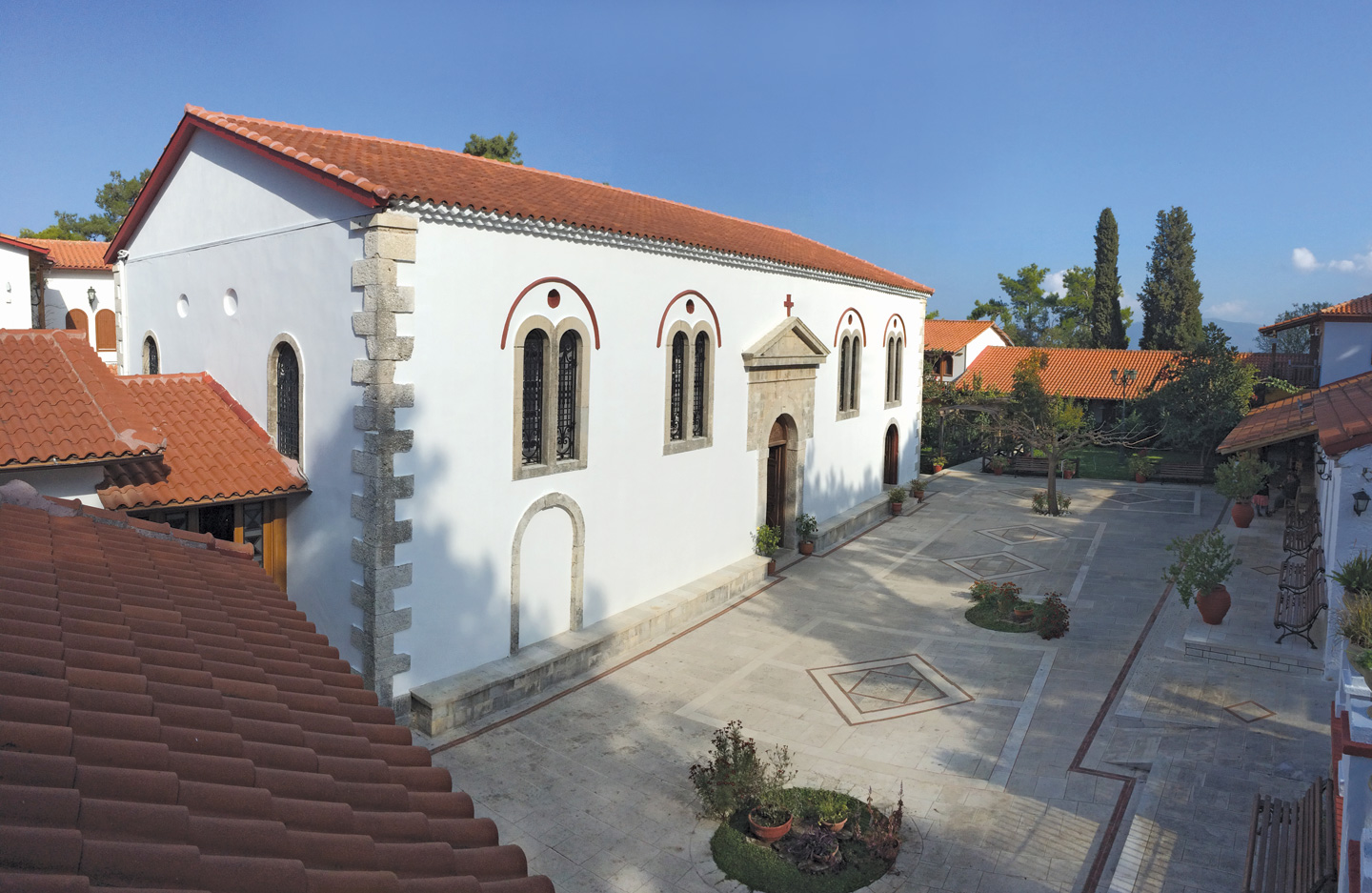Kouzounteli
Pefaneromenis Avenue is very pleasant for a walk or a bicycle ride. It goes up quite a steep hill leading to the monastery of Faneromeni. The first section of the road, ending at Kouzounteli, is one of the favourite walks of Lefkadians, in both winter and summer. The area takes its name from the erstwhile Turkish landowner (Kuzum Bey) of the area, or from the Turkish kuzum-delis meaning ‘fine horseman’.
Under the age-old olive and plane trees and tall birches there are still two traditional coffeehouses in Kouzounteli, serving traditional fruit jams ‘in a spoon’, vanilla ‘submarine’ (a sweet delicacy plunged in a cold glass of water) and home-made soumada (‘orgeat’ -an oriental drink of barley or almond and orange-flower water) served with a house-speciality aniseed-flavoured rusk. And their fried potatoes are especially delicious. Time stands still in the serenity of these coffee-houses in the wooded grove and the pace of life slows down; on the small iron tables impromptu tournaments of backgammon are organised, or card games, and never-ending discussions, and mothers can let their children play in the safely-fenced area of greenery. Over recent years, due to the increased traffic on the road, the idyllic landscape has been somewhat disrupted, but it still preserves much of its traditional peacefulness.





